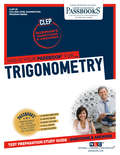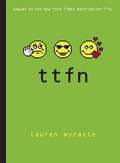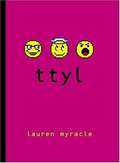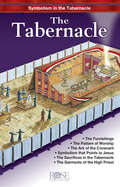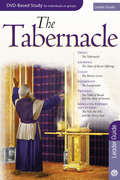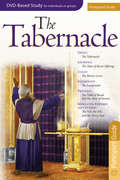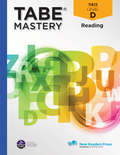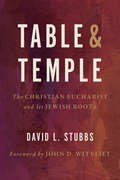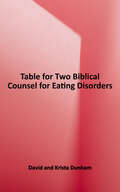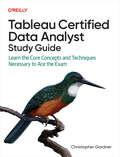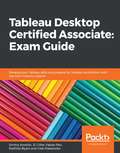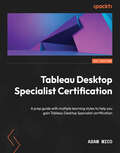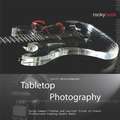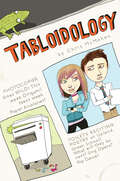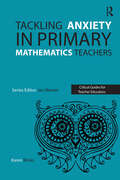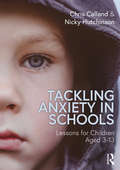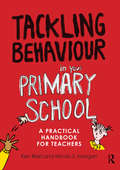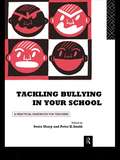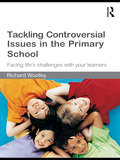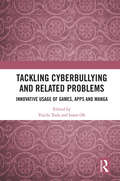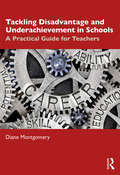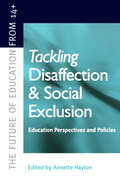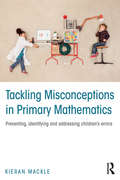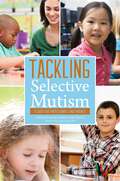- Table View
- List View
TRIGONOMETRY: Passbooks Study Guide (College Level Examination Program Series (CLEP) #No. Q-29)
by National Learning CorporationThe College Level Examination Program (CLEP) enables students to demonstrate college-level achievement and earn college credit in various subject areas based on knowledge acquired through self-study, high school and adult courses, or through professional means. The CLEP Trigonometry Passbook® prepares you by sharpening knowledge of the skills and concepts necessary to succeed on the upcoming exam and the college courses that follow. It provides a series of informational texts as well as hundreds of questions and answers in the areas that will likely be covered on your upcoming exam.
TTFN (Internet Girls #2)
by Lauren MyracleNow high school juniors, Zoe, Maddie, and Angela continue to share "instant messages" with one another as one of them experiments with drugs, another gets her first boyfriend, and the third moves three thousand miles away.
TTYL (Internet Girls #1)
by Lauren MyracleThis book chronicles, in "instant message" format, the day-to-day experiences, feelings, and plans of three friends, Zoe, Maddie, and Angela, as they begin tenth grade.
Tabernacle
by Rose Publishing"The best selling The Tabernacle ebook brings to life the Old Testament teaching on the Tabernacle in the Wilderness of Sinai, the place where God promised to dwell among his people. The full-color ebook features a cutaway illustration that provides an inside look at the Tabernacle. The artist's illustration indicates more than 15 important features of the Tabernacle, such as the Ark of the Covenant, the High Priest, and the Sacrifice, and how they relate to our relationship with God today through Christ. Compared to textbooks on the Tabernacle, The Tabernacle ebook is designed and written to be easy-to-understand and may be used for personal study or by a wide variety of groups. The Tabernacle is a tremendous teaching aid and an informative guide to teach on topics such as: *What it was like to enter the Tabernacle *The Pattern of Worship and the furnishings of the Tabernacle *How the 12 Tribes of Israel camped around the Tabernacle in a specific order *The Ark of the Covenant *Old Testament Symbols of Jesus *Aaron as High Priest and Jesus as the better High Priest The Tabernacle pamphlet illustration, created exclusively for Rose Publishing by renowned Bible artist Stan Stein, provides an amazing inside look at the Tabernacle and all its furnishings. But this visual teaching aid not only explains the Old Testament Tabernacle in detail, it also helps young and old alike understand the symbolic relationship between the Tabernacle and Jesus Christ. The content of The Tabernacle offers a wealth of information for the study leader and those they teach, including: 1. A Numbered Key to the full-color Tabernacle illustration includes Bible references and descriptions for each of the following Tabernacle features *The Gate of the Court *Court Fence *Brazen Altar *Offerings *Laver of Bronze *Tabernacle *Holy Place *Golden Lampstand *Table of Showbread (Shewbread) *Altar of Incense *Veil *Most Holy Place (Holy of Holies) *Ark of the Covenant *Mercy Seat *The Cloud and Pillar of Fire *The High Priest and His Holy Garments2. An In-Depth Description of the Ark of the Covenant *A physical description of the Ark *Its purpose *Where it was placed in the Tabernacle *The role of the Levites, the Day of Atonement and the Mercy Seat *Where God dwelled and spoke to the Priest *The scriptural references to the Ark of the Covenant3. Old Testament Symbols of Jesus, including Old Testament and New Testament Bible references. 4. A Description and full-color illustration of the High Priest *Qualifications *Clothing and the purpose of the 11 specific items found in scriptures, such as the Turban (or Mitre), onyx stones on shoulders, and breastplate with 12 precious stones *Service of the High Priest *Aaron, the High Priest *Jesus, the better High Priest5. The Types of Sacrifices in the Tabernacle, their purposes and scripture reference 6. The Journey of the Ark of the Covenant *From Mt. Sinai and covering 400 years beginning with the Exodus in 1450 BC *Ending in 500 BC when Jeremiah prophesied that the Ark would be replaced by the Lord's presence.7. The Tabernacle campsite and the placement of the 12 Tribes of Israel around the Tabernacle, including: *The families of Merari and the Tribes of Naphtali, Asher, Dan *The families Moses, Aaron and sons and the Tribes of Issachar, Judah, Zebulun *The families of Kohath and the Tribes of Gad, Simeon, Reuben *The families of Gershonites and the Tribes of Ephraim, Manasseh, and Benjamin "If you go to the Facebook page The Tabernacle Journey you will see our efforts to reach out to Sedona and our many tourists with a full-scale reproduction of the tabernacle. We actually used the Rose book to prepare the groups that were waiting to enter. One guest ordered a copy from you. It was very helpful. I attached the script we used for our guides. We had about 1000 visitors go through before one of the worst storms I have ever seen here made the structure unstable and the ground too wet. We fight quite a battle here in what the New Age calls its capital. Many were very moved. One Jewish man exclaim
Tabernacle: Leader Guide
by Rose PublishingThis is the leader guide to The Tabernacle, the ONLY DVD study from The Tabernacle Experience® on the market! This guide has everything a leader needs! From tips on how start each session to riveting discussion questions, this leader guide makes leading a Sunday School class, small group, or home study easier than ever. Covers all 6 sessions!This new The Tabernacle DVD is a fantastic 6-session video-based study on the biblical Tabernacle, and is perfect for your personal study, church small group, or Sunday school class. Learn more about this movable tent of meeting in the wilderness of Sinai where God dwelled with his people.Using the popular Tabernacle Experience® replica of the Tabernacle of Moses, this easy-to-teach study presents an expert-guided tour and explanation of each part. As you walk through this life-size model of the Old Testament Tabernacle, you will work your way from the Outer Courtyard into the Most Holy Place. Your teacher Shawn Barnard explains the significance and symbolism of each section of the Tabernacle. New! This ready-to-use Tabernacle DVD will explain - * Why and how the Tabernacle was built* How the sacrifices pointed toward Jesus Christ: Sin Offering, Guilt Offering, Grain/Gift Offering, Burn Offering, and Peace Offering* Why the Tabernacle is often called the "Tabernacle of God" because the design of the tent revealed God's holiness and humanity's need for God* The symbolism behind the Golden Lampstand/Candlestick, the Table of the Bread of Presence, the Altar of Incense and more* Why the Ark of the Covenant and Mercy Seat were at the center of worship* How the Tabernacle relates to biblical holidays, such as Passover* The parallels between the Tabernacle, Christ's ministry, and the church
Tabernacle: Participant Guide
by Rose PublishingThis is the participant guide to The Tabernacle, the ONLY DVD study from The Tabernacle Experience® on the market! This guide provides discussion questions, session overviews, and additional information to help enhance your understanding of The Tabernacle. It covers all 6 sessions included in The Tabernacle DVD-based study. Covers all 6 sessions. This new The Tabernacle DVD is a fantastic 6-session video-based study on the biblical Tabernacle, and is perfect for your personal study, church small group, or Sunday school class. Learn more about this movable tent of meeting in the wilderness of Sinai where God dwelled with his people.Using the popular Tabernacle Experience® replica of the Tabernacle of Moses, this easy-to-teach study presents an expert-guided tour and explanation of each part. As you walk through this life-size model of the Old Testament Tabernacle, you will work your way from the Outer Courtyard into the Most Holy Place. Your teacher Shawn Barnard explains the significance and symbolism of each section of the Tabernacle. New! This ready-to-use Tabernacle DVD will explain - * Why and how the Tabernacle was built* How the sacrifices pointed toward Jesus Christ: Sin Offering, Guilt Offering, Grain/Gift Offering, Burn Offering, and Peace Offering* Why the Tabernacle is often called the "Tabernacle of God" because the design of the tent revealed God's holiness and humanity's need for God* The symbolism behind the Golden Lampstand/Candlestick, the Table of the Bread of Presence, the Altar of Incense and more* Why the Ark of the Covenant and Mercy Seat were at the center of worship* How the Tabernacle relates to biblical holidays, such as Passover* The parallels between the Tabernacle, Christ's ministry, and the church
Tabe® Mastery Level D Reading
by New Readers PressHelp your students master the skills they need to succeed on TABE 11/12.
Table and Temple: The Christian Eucharist and Its Jewish Roots
by David L. StubbsIn most modern discussions of the Eucharist, the Jewish temple and its services of worship do not play a large role. They are often mentioned in passing, but little work is done in grounding, organizing, or explicating the connections between these things and the Eucharistic celebration. In Table and Temple, David Stubbs sheds light on the reasons for this neglect and shows the important role the temple and its worship played in the imagination of Jesus and his disciples about what was to become a central Christian practice. He then explores the five central meanings of the temple and its main services of worship, demonstrating their relationship to the five central meanings of the Christian Eucharist. These central meanings of the temple itself, the daily, weekly, and monthly sacrifices, and the three pilgrim feasts are linked to the history of salvation. Stubbs distills them to (1) the real presence of God and God&’s Kingdom among God&’s people, (2) thanksgiving for creation and providence, (3) remembrance of past deliverance, (4) covenant renewal in the present, and (5) a hopeful celebration of the feast to come. They provide a solid ground upon which to organize contemporary Christian Eucharistic imagination and practice. Such a solid ground not only expands our theology and enriches contemporary practice—it can also bring greater ecumenical unity to this central Christian rite.
Table for Two: Biblical Counsel for Eating Disorders
by David Krista Dunham"In this unique book, David and Krista Dunham share their journey through her eating disorder” -- Provided by publisher.
Tableau Certified Data Analyst Study Guide
by Christopher GardnerIn today's data-driven world, earning the Tableau Certified Data Analyst credential signals your ability to connect, analyze, and communicate insights using one of the industry's leading visualization platforms. This study guide offers practical and comprehensive preparation for the certification exam, with walk-throughs, best practices, vocabulary, and example questions to help you build both confidence and competence in Tableau.Written by Christopher Gardner, business intelligence analyst and lead Tableau developer at the University of Michigan, this guide supports first-time test-takers and seasoned users alike. You'll begin with foundational skills in Tableau Prep Builder and Tableau Desktop—connecting, combining, and preparing data—before progressing to building effective visualizations, performing calculations, and applying advanced tools like level-of-detail expressions, parameters, forecasts, and predictive analytics.Read, manipulate, and prepare data for analysisNavigate Tableau's tools to build impactful visualizationsWrite calculations and functions to enhance your dashboardsShare your work responsibly with secure publishing options
Tableau Desktop Certified Associate: Develop your Tableau skills and prepare for Tableau certification with tips from industry experts
by Dmitry Anoshin JC Gillet Fabian Peri Radhika Biyani Gleb MakarenkoLearn through hands-on exercises covering a variety of topics including data connections, analytics, and dashboards to effectively prepare for the Tableau Desktop Certified Associate exam Key Features Prepare for the Tableau Desktop Certified Associate exam with the help of tips and techniques shared by experts Implement Tableau's advanced analytical capabilities such as forecasting Delve into advanced Tableau features and explore best practices for building dashboards Book Description The Tableau Desktop Certified Associate exam measures your knowledge of Tableau Desktop and your ability to work with data and data visualization techniques. This book will help you to become well-versed in Tableau software and use its business intelligence (BI) features to solve BI and analytics challenges. With the help of this book, you'll explore the authors' success stories and their experience with Tableau. You'll start by understanding the importance of Tableau certification and the different certification exams, along with covering the exam format, Tableau basics, and best practices for preparing data for analysis and visualization. The book builds on your knowledge of advanced Tableau topics such as table calculations for solving problems. You'll learn to effectively visualize geographic data using vector maps. Later, you'll discover the analytics capabilities of Tableau by learning how to use features such as forecasting. Finally, you'll understand how to build and customize dashboards, while ensuring they convey information effectively. Every chapter has examples and tests to reinforce your learning, along with mock tests in the last section. By the end of this book, you'll be able to efficiently prepare for the certification exam with the help of mock tests, detailed explanations, and expert advice from the authors. What you will learn Apply Tableau best practices to analyze and visualize data Use Tableau to visualize geographic data using vector maps Create charts to gain productive insights into data and make quality-driven decisions Implement advanced analytics techniques to identify and forecast key values Prepare customized table calculations to compute specific values Answer questions based on the Tableau Desktop Certified Associate exam with the help of mock tests Who this book is for This Tableau certification book is for business analysts, BI professionals, and data analysts who want to become certified Tableau Desktop Associates and solve a range of data science and business intelligence problems using this example-packed guide. Some experience in Tableau Desktop is expected to get the most out of this book.
Tableau Desktop Specialist Certification: A prep guide with multiple learning styles to help you gain Tableau Desktop Specialist certification
by Adam MicoMaster Tableau fundamentals and get the one and only Tableau certification that never expires, while expediting your journey from zero to certificationKey FeaturesLearn how Tableau works inside and out for basic as well as intermediate uses of the applicationGain knowledge from a Tableau visionary and ambassador who successfully passed the examination in 2021Understand what is needed to pass a knowledge-based examination without having to use Tableau in the processBook DescriptionThe Tableau Desktop Specialist certification is fundamental for any data visualization professional who works in the field with Tableau.This book gets you started by covering the exam format, Tableau basics, and best practices for preparing data for analysis and visualization. It also builds on your knowledge of advanced Tableau topics to get you up to speed with the essential domains and domain objectives. Although the guide provides an outline and starting point to key in on what needs to be understood before the examination, it also delivers in context to give you a strong understanding of each piece before taking the exam. Instructions on how to get hands on with examples, a common data source, and suggested elements are also included. Understanding the concepts will not only assist you in passing the examination, but will also help you work effectively with the tool in your workspace.By the end of this book, you'll be able to efficiently prepare for the certification exam with the help of mock tests, detailed explanations, and expert advice from the author.What you will learnUnderstand how to add data to the applicationExplore data for insights in TableauDiscover what charts to use when visualizing for audiencesUnderstand functions, calculations and the basics of parametersWork with dimensions, measures and their variationsContextualize a visualization with marksShare insights and focus on editing a Tableau visualizationWho this book is forIf you're a data analyst, data scientist, or if you just want to enhance your data visualization tool stack, this book is for you. It's designed for those without prior and those with minimal exposure to Tableau, which also means it's useful for anyone moving into their first role that relies on data visualization.
Tabletop Photography
by Cyrill HarnischmacherImagine capturing stunning, professional-looking product shots without needing a studio filled with expensive equipment and large flash units. This book teaches all the steps for creating your own tabletop photography studio. Affordable compact flashes offer a number of creative lighting options within your tabletop studio; and the appropriate lighting and backdrop, and the creative use of your camera's features are key to a perfect image. Author Cyrill Harnischmacher guides you through a variety of exposure and lighting techniques, and covers how to achieve excellent results using compact flash units. Whether you wish to capture product images for use in print or on the web, or you want to improve your photos for personal use, this book will provide you with everything you need to know to get great results. Topics include: Lighting Setups; Reflectors, Diffusors, and Accessories; Soft Boxes and Umbrellas; Strobe Flashes; Combining Long Exposures with Flashlights; Multi-Flash Exposures; Composition and Arrangements; Creating Backdrops; Product Photography; Smoke, Fog, and Special Effects; Food Photography and much more...
Tabloidology
by Chris McMahenTake one prankster, put her together with the editor of the world's most boring school newspaper, add one over-worked principal, and you've got a recipe for the most chaotic few weeks in the history of Upland Green Elementary. The unlikely duo of Martin Wettmore, editor and expert grammarian, and Trixi Wilder, prankster extraordinaire, is given the task of improving the pathetic sales of their school newspaper. Martin and Trixi clash over everything from journalistic integrity (Trixi has none) to imagination (Martin has none). But when the paper starts to wreak havoc at the school, Principal Baumgartner shuts it down and assigns Trixi to Saturday morning bus-washing duty. To redeem themselves, Martin and Trixi resolve to create one very special edition of the Upland Green Examiner.
Tackling Anxiety in Primary Mathematics Teachers (Critical Guides for Teacher Educators)
by Karen WicksThis book provides teacher educators with an understanding of the issues around mathematics anxiety and a framework of teaching strategies to support undergraduates, trainee teachers and established professionals in primary settings in developing confidence in learning and teaching mathematics.The existence of mathematics anxiety in adults is both prevalent and well documented, and there is a real concern that adults who are anxious or lacking in confidence in their own mathematical ability may affect the quality of teaching and learning for those in their care. Research has identified that there are lower levels of mathematical confidence in adults working with children in primary rather than secondary schools, and that where adults are anxious this can be passed on to the pupils with whom they work. This book addresses issues related to the effect that mathematics anxiety has on those teaching and working with primary aged children and supports teacher educators to develop confidence in both trainee teachers and established professionals.
Tackling Anxiety in Schools: Lessons for Children Aged 3-13
by Chris Calland Nicky HutchinsonAnxiety is the biggest mental health problem in children, and research tells us it’s on the rise. Modern life creates many challenges and pressures for them and the COVID-19 pandemic has only added to this growing problem. Tackling Anxiety in Schools supports all children to get into good habits of recognising their feelings of anxiety and equips them with a repertoire of coping strategies they can use in their day-to-day lives. This book explains how schools can create a safe climate for children and introduces a course of interactive lessons for all ages of primary school and the years beyond. It uses evidence-based preventative strategies, which are suitable for the whole class, based on the needs of children at each stage of development. The intervention programmes include lively activities, resources and courses of lessons which emphasise positivity and are engaging and enjoyable for pupils. With over 55 years’ combined experience teaching and working on mental health issues in schools, the authors of this book have focused on providing practical advice and lesson plans that schools can use directly in the classroom. Being able to recognise and deal with anxiety is a vital skill for good mental health and will benefit children for life. The insightful and structured lessons in Tackling Anxiety in Schools teach children the coping skills they need to develop emotional resilience and thrive.
Tackling Behaviour in your Primary School: A practical handbook for teachers
by Nicola S. Morgan Ken ReidTackling Behaviour in the Primary School provides ready-made advice and support for classroom professionals and can be used, read and adapted to suit the busy everyday lives of teachers working in primary schools today. This valuable text sets the scene for managing behaviour in the primary classroom in the context of the Children Act 2004 agenda, making it highly relevant to trainee primary teachers, learning school mentors, classroom assistants, behaviour specialists and senior management teams. As experts in the field of behaviour management, the authors draw on their many years of experience to provide evidenced whole-school strategies, extensively-researched concepts and step-by-step behaviour programmes. Topics covered include: Understanding behaviour How to measure behaviour and why this can be an effective approach Using and implementing whole-school behaviour policies Honing your classroom management skills Managing bullying Dealing with specific classroom difficulties Working effectively and supportively with parents. Drawing on case-studies throughout, this handbook will help you to understand and deal with the most confrontational of classroom behaviour. Tackling Behaviour in the Primary School provides all staff, parents and carers engaged in health, education and social services with a ready-made resource packed full of strategies, ideas, activities and solutions to help manage behaviour in even the toughest of classrooms.
Tackling Bullying in Your School: A practical handbook for teachers
by Peter K. Smith Sonia SharpThis comprehensive collection of essays provides a series of highly practical guidelines which schools can implement themselves. Step-by-step advice is given on developing a whole-school policy which is generally seen as the essential nucleus of effective action. The book also suggests methods for tackling bullying through classroom and curriculum activities, including video, drama, and the use of quality circles and of working with pupils involved in bullying situations. Emphasis is placed on assertiveness training for pupils who may be bullied, and non-punitive work with pupils who bully others. As the majority of bullying takes place in playgrounds, the book includes innovative sections on training lunchtime supervisors, enhancing playground activities, and improving the playground environment.
Tackling Controversial Issues in the Primary School: Facing Life's Challenges with Your Learners
by Richard WoolleyHow do you broach family values with seven year olds? Can you help young children understand racism? Can you avoid bringing your own prejudices into the classroom? Talking effectively about controversial issues with young children is a challenge facing every primary school teacher. Tackling Controversial Issues in the Primary School provides teachers with support and guidance as you engage with the more tricky questions and topics you and your pupils encounter. Illuminated with case studies and examples of how teachers and children have confronted issues together, this book helps you understand your own perspectives and provides fresh approaches for the primary classroom. It considers how best to work with parents and carers, whole-school policies for tackling issues, and ideas for circle time, setting up international links, school councils and buddying systems. The range of challenging topics covered includes: family values racism in mono and multi-cultural settings democracy and citizenship the environment and sustainability consumerism, finances and media advertising gender, health and identity grief and loss. For all student and practising primary teachers, Tackling Controversial Issues in the Primary School provides much needed support as you help your learners face complicated ideas, find their voice and get involved in the issues that they feel make a difference.
Tackling Cyberbullying and Related Problems: Innovative Usage of Games, Apps and Manga
by Toda, Yuichi / Oh, InsooThis book looks at innovative tools developed by Japanese and Korean researchers and practitioners to tackle cyberbullying and internet-related problems (addiction, cybercrimes, etc.). The contributors have created preventative and intervention measures for children using games, apps, manga and anime videos, which are more accessible for children than textbooks or classroom-based lessons. The contributors cover their experiences of developing these new approaches with children, parents and teachers as well as giving insights and evidence into how these innovative techniques and methods work. By sharing their expertise, the authors hope to contribute to further improvements of games, apps, manga and anime and to improve the safety of children online.
Tackling Disadvantage and Underachievement in Schools: A Practical Guide for Teachers
by Diane MontgomeryThis practical resource shows what teachers can do to combat disadvantage and underachievement in schools and from early years to secondary education. Written by an experienced teacher, teacher educator and chartered psychologist, the book highlights effective teaching and learning methods that can be used to overcome barriers to learning, satisfy different learning needs and help students achieve their full potential. Packed with up-to-date research, useful guidance and examples, the book explores what schools have done and what they can do without need for extra resourcing. It includes case studies that examine the types of underachievement patterns that are found across age ranges and, by detailing approaches in subject teaching, defines the nature of effective learning and shows what strategies can be used to meet these criteria. Moreover, the chapters provide: An exploration into the central needs of underachieving and disadvantaged learners across the ability range Information about how to audit the provision and the needs Accessible resources for the classroom changes that need to be made to the education and training of teachers Tackling Disadvantage and Underachievement in Schools is essential reading for teachers in early years education and primary and secondary schools, teachers in training and their educators, as well as leaders, policymakers, researchers and anyone interested in improving performance in schools.
Tackling Disaffection and Social Exclusion (The\future Of Education From 14+ Ser.)
by Annette HaytonThis text investigates UK policy issues and strategies in an international context, highlighting the importance of educational exclusion and disaffection on the international agenda. The authors examine the problems and key areas of policy development for education.
Tackling Misconceptions in Primary Mathematics: Preventing, identifying and addressing children’s errors
by Kieran MackleDid you know that a circle has more than one side? Are you aware of the difference between 1:2 and ½? Could you spot when a 2D shape is actually 3D? Tackling Misconceptions in Primary Mathematics is a practical guide based on the principles that sound subject knowledge is key to fostering understanding, and addressing misconceptions is central to pupil progress. With an emphasis on preventing as well as unpicking misconceptions in the classroom, it offers trainee and practising teachers clear explanations, practical strategies, and examples of the classroom language and dialogue that will help pupils successfully navigate tricky topics. The book demonstrates the importance of preventing misconceptions through what is said, done and presented to children, giving a variety of examples of common misconceptions and exploring how they can be addressed in a classroom environment. Proper intervention at the point of misconception is regarded as a key skill for any outstanding classroom practitioner and the author stresses the value in understanding how the pupil got there and explaining that it’s okay to make mistakes. Misconceptions are only one step away from correctly formed concepts if harnessed with care and skill. This comprehensive text is designed to be read as either a short course introduction, or dipped into as a guide to assist teaching. It is essential reading for trainee primary school teachers on all routes to QTS, as well as mathematics subject leaders and practising teachers looking to inspire the next generation of confident and inquisitive mathematicians.
Tackling Selective Mutism: A Guide for Professionals and Parents
by Tony Cline Alison Wintgens Maggie Johnson Jenny Packer Nitza Katz-Bernstein Geoffrey Gibson David Bramble Johnston Susan Lindsay Whittington Victoria Roe Denise Lanes Charlotte Firth Kate Jones Keiko Kakuta Alice Sluckin Jane Kay Rosemary Sage Benita Rae Smith Miriam Jemmett Jyoti Sharma Carl Sutton Hilary M Cleator Jean GrossBringing together the latest research and understanding on selective mutism, this edited book gives essential information on the various treatment and therapy options. Experts in the fields of speech and language therapy, psychology, music therapy education and communication offer a wide range of professional perspectives on the condition, while case studies from people with selective mutism, past sufferers and parents reveal the personal impact. The book also clarifies what support a person with selective mutism is likely to need at home, school and in social situations. This definitive volume on selective mutism will be key reading for professionals such as speech and language therapists, educational psychologists, child psychiatrists, child and adolescent mental health workers and anyone working with selective mutism in therapeutic and educational settings, as well as family members wanting a closer understanding of what selective mutism is and how they can help.
